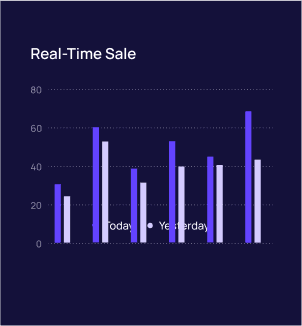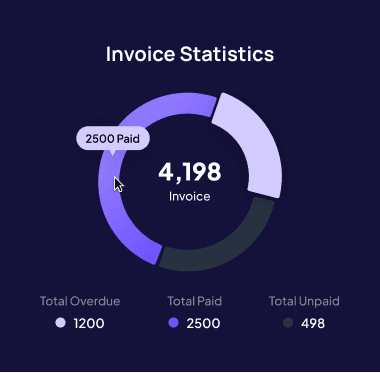

Our Documentation
The documentation page should serve as a resource for users, guiding them through every aspect of using our product.





Our Documentation
The documentation page should serve as a resource for users, guiding them through every aspect of using our product.





Our Documentation
The documentation page should serve as a resource for users, guiding them through every aspect of using our product.




Getting Started
Introduction
The Introduction section in the Getting Started panel serves as a....
Account Setup
The Account Setup section in Getting Started guides new users...
First-Time User Guide
The First-Time User Guide in the Getting Started section serves as....
Getting Started
Introduction
The Introduction section in the Getting Started panel serves as a....
Account Setup
The Account Setup section in Getting Started guides new users...
First-Time User Guide
The First-Time User Guide in the Getting Started section serves as....
Getting Started
Introduction
The Introduction section in the Getting Started panel serves as a....
Account Setup
The Account Setup section in Getting Started guides new users...
First-Time User Guide
The First-Time User Guide in the Getting Started section serves as....
Explore Advanced Features
Explore Advanced Features
Explore Advanced Features
API Documentation
Provide a brief description of each main feature and what it enables users to accomplish.
Quick Access to Key Features
Explain where users can find these features within the dashboard or navigation menu.
Feature-Specific Payment
Highlight the benefits each feature offers, such as improving team communication, increasing productivity.
Examples of Common Use Cases
Illustrate how a task manager can be used to coordinate project steps or how a collaborativ...
API Documentation
Provide a brief description of each main feature and what it enables users to accomplish.
Quick Access to Key Features
Explain where users can find these features within the dashboard or navigation menu.
Feature-Specific Payment
Highlight the benefits each feature offers, such as improving team communication, increasing productivity.
Examples of Common Use Cases
Illustrate how a task manager can be used to coordinate project steps or how a collaborativ...
API Documentation
Provide a brief description of each main feature and what it enables users to accomplish.
Quick Access to Key Features
Explain where users can find these features within the dashboard or navigation menu.
Feature-Specific Payment
Highlight the benefits each feature offers, such as improving team communication, increasing productivity.
Examples of Common Use Cases
Illustrate how a task manager can be used to coordinate project steps or how a collaborativ...
FAQ
FAQ
FAQ
What’s the timeline for establishing a design system?
The timeline for creating a design system typically ranges from 8 to 12 weeks, ultimately depending on how complex the project is.
Are design systems only for large enterprises? How can I tell if my company is ready for one?
Design systems aren’t just for big companies—they work for teams of all sizes. As a matter of fact, it’s advantageous to start small and add to the system as your product and team expand, helping your company avoid future design and tech debt while improving consistency and efficiency right away.
How do you handle revisions?
Three complimentary revision cycles are included with each design system project. Additional revisions will be billed at the standard hourly rate.
What do we need to have before we can hire you?
Before hiring me, it’s essential to have at least one point of contact, preferably two, to manage the product and development aspects, with a stronger focus on the latter. This team member will collaborate closely with me to create reusable components and ensure the design system is implemented effectively across the company. This role is non-negotiable because design systems only succeed when teams see their value in day-to-day work. Having a developer involved in building these components not only helps them understand the system’s impact but also positions them as the expert and go-to person once the system is handed off, ensuring smooth adoption and long-term maintenance within your company.
How do we get started?
Schedule a call to talk about your company, goals, and where your product is now. This helps me understand your needs and plan the next steps for your design system.
What’s the timeline for establishing a design system?
The timeline for creating a design system typically ranges from 8 to 12 weeks, ultimately depending on how complex the project is.
Are design systems only for large enterprises? How can I tell if my company is ready for one?
Design systems aren’t just for big companies—they work for teams of all sizes. As a matter of fact, it’s advantageous to start small and add to the system as your product and team expand, helping your company avoid future design and tech debt while improving consistency and efficiency right away.
How do you handle revisions?
Three complimentary revision cycles are included with each design system project. Additional revisions will be billed at the standard hourly rate.
What do we need to have before we can hire you?
Before hiring me, it’s essential to have at least one point of contact, preferably two, to manage the product and development aspects, with a stronger focus on the latter. This team member will collaborate closely with me to create reusable components and ensure the design system is implemented effectively across the company. This role is non-negotiable because design systems only succeed when teams see their value in day-to-day work. Having a developer involved in building these components not only helps them understand the system’s impact but also positions them as the expert and go-to person once the system is handed off, ensuring smooth adoption and long-term maintenance within your company.
How do we get started?
Schedule a call to talk about your company, goals, and where your product is now. This helps me understand your needs and plan the next steps for your design system.
What’s the timeline for establishing a design system?
The timeline for creating a design system typically ranges from 8 to 12 weeks, ultimately depending on how complex the project is.
Are design systems only for large enterprises? How can I tell if my company is ready for one?
Design systems aren’t just for big companies—they work for teams of all sizes. As a matter of fact, it’s advantageous to start small and add to the system as your product and team expand, helping your company avoid future design and tech debt while improving consistency and efficiency right away.
How do you handle revisions?
Three complimentary revision cycles are included with each design system project. Additional revisions will be billed at the standard hourly rate.
What do we need to have before we can hire you?
Before hiring me, it’s essential to have at least one point of contact, preferably two, to manage the product and development aspects, with a stronger focus on the latter. This team member will collaborate closely with me to create reusable components and ensure the design system is implemented effectively across the company. This role is non-negotiable because design systems only succeed when teams see their value in day-to-day work. Having a developer involved in building these components not only helps them understand the system’s impact but also positions them as the expert and go-to person once the system is handed off, ensuring smooth adoption and long-term maintenance within your company.
How do we get started?
Schedule a call to talk about your company, goals, and where your product is now. This helps me understand your needs and plan the next steps for your design system.


Unlock Your Financial Potential with Automation
Create dynamic budgets with predictive insights and scenario planning to help you manage future cash flows.




Unlock Your Financial Potential with Automation
Create dynamic budgets with predictive insights and scenario planning to help you manage future cash flows.




Unlock Your Financial Potential with Automation
Create dynamic budgets with predictive insights and scenario planning to help you manage future cash flows.
